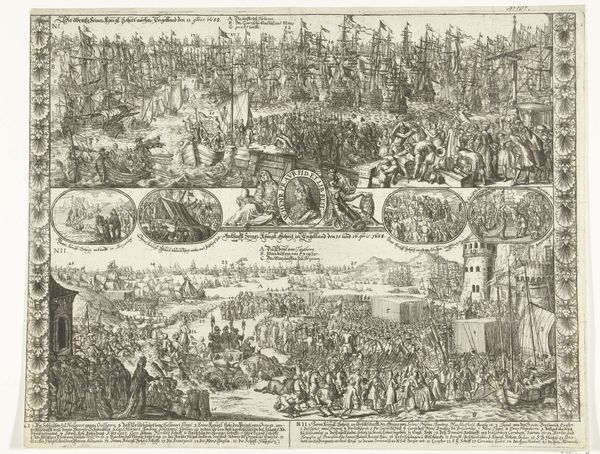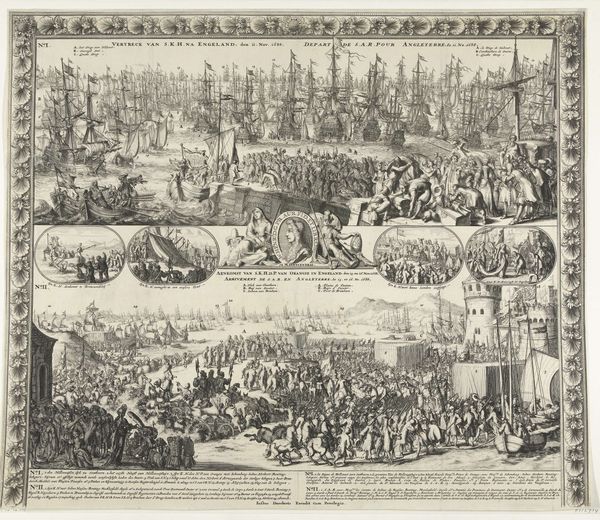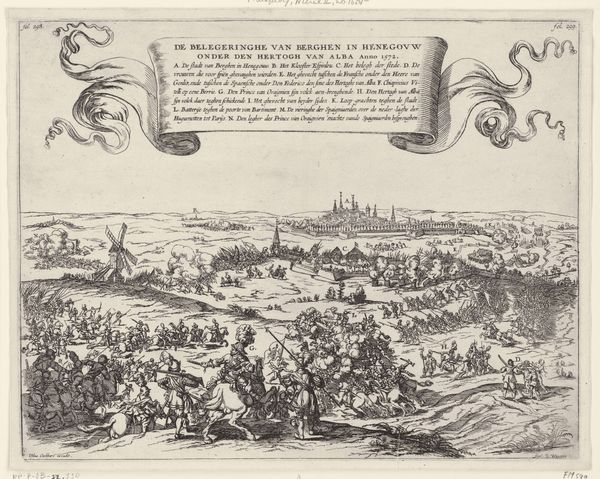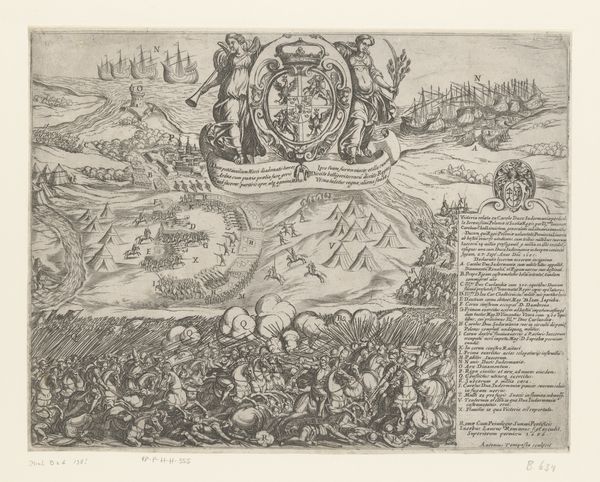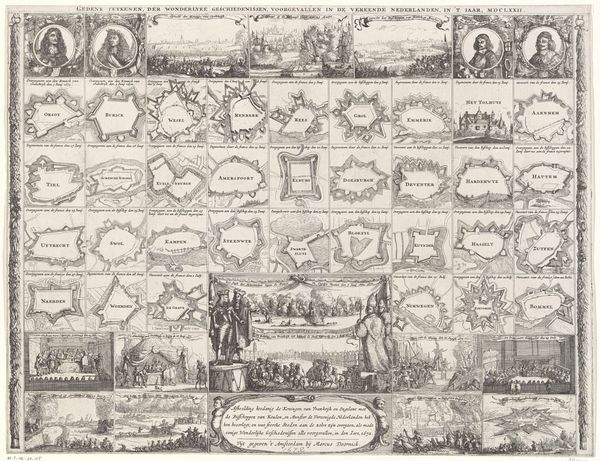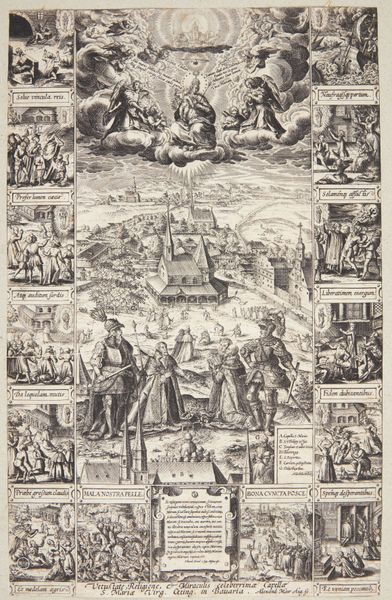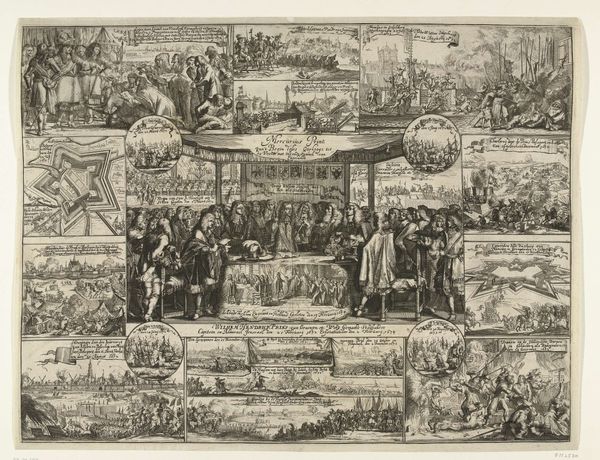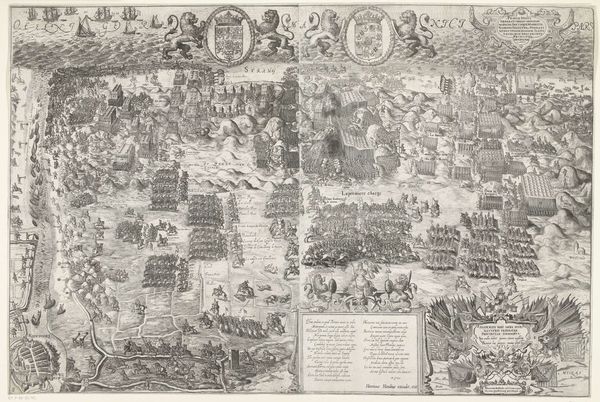
Oorlogshandelingen in de jaren 1673 en 1674 leidend tot de Vrede van Westminster met Engeland waarmee een eind kwam aan de Derde Engelse Oorlog 1674
0:00
0:00
print, engraving
#
narrative-art
#
baroque
# print
#
old engraving style
#
cityscape
#
history-painting
#
engraving
Dimensions: height 430 mm, width 565 mm
Copyright: Rijks Museum: Open Domain
Editor: This print by Isaac Sorious from 1674, titled "War Acts in the Years 1673 and 1674 leading to the Peace of Westminster with England...", documents a specific historical moment. The stark monochrome, packed composition, and multiple narratives vying for attention... It feels overwhelmingly detailed. How do you even begin to approach a work like this? Curator: By initially setting aside the impulse to 'read' it for immediate historical narrative. Instead, observe how Sorious has structured the pictorial field. Notice the distinct, framed vignettes, each a microcosm within the larger plane. How does this division, this gridded approach, affect the viewer's experience? Editor: It almost feels like a comic strip, each panel a separate event, yet they all exist together in one space. But does this layout have a particular function beyond mere documentation? Curator: Indeed. The structure echoes a sense of order imposed upon chaotic events. Note the contrast between the dynamic scenes of battle and the static portraits of rulers at the top. This juxtaposition draws our attention to power dynamics. How do formal elements, like line weight and composition, reinforce these distinctions? Editor: The ruler portraits are clearly delineated, almost clinical. In contrast, the battle scenes are awash in movement. There are figures bleeding outside the line. It adds to the feeling of unrest, a state before control has been achieved. What do you make of that lower register with allegorical imagery, cherubs and figures on boats? Curator: These introduce symbolic layers that function as visual commentary. Are they celebrating or critiquing? What ideological perspective might this reflect? How might these vignettes relate to the dominant style of its era? Editor: I see now that without considering how its form is constructing meaning, its full message is less understood. Focusing on structure, composition, and symbolism first creates the language for understanding its narrative content later. Curator: Precisely. Through that approach to its components, and then situating that visual strategy in its historical period, this artifact reveals far more about cultural attitudes toward war, peace, and power than simply its depiction.
Comments
No comments
Be the first to comment and join the conversation on the ultimate creative platform.

